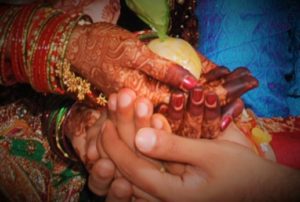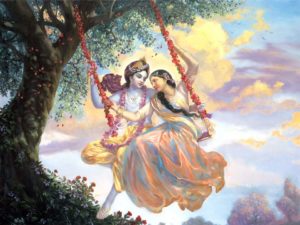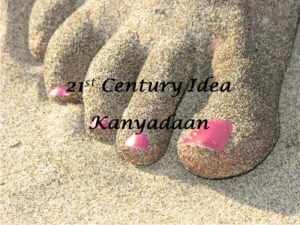
Outfits like Maanyavar do not care about our traditions. They know their customers well. Their recent ad, featuring Ms Alia Bhatt, which interprets Kanyadaan as a regressive custom treating women as objects of donation, is not a mere aberration. At an earlier wedding, a pundit ji derided the custom with impunity and called for its elimination. A few hands applauded while others listened in silence. I sat flabbergasted!
The ad deserves credit for an emotionally seductive message, delivered with finesse, that Kanyadaan is regressive. Millions of unsuspecting Hindus with a deeper & very different understanding of the tradition are turned into villains and victims at once! They are labeled and ridiculed as patriarchic and regressive.
How could those protesting the ad justify the ‘patriarchy & insult’ this ritual promotes for females? Is Kanyadaan a regressive custom?
Ill-considered modern interpretations, devoid of any cultural/religious context, feelings or meaning, underlie the misplaced feeling. Hindu view that postulates both male & female energies as equal halves and complimentary parts of the whole is ignored, just as the symbolism and purpose of the ritual are.
For perspective, Bollywood can claim credit for turning women into objects of pleasure. The star icons peddling these messages of ‘respect for women’ are the foremost in disrobing women of their respect. And the uninformed activists, with misplaced pride, will accept all of that as ‘modern’.
Now back to the point….
What is a Daan?
Examine ‘bali-daan – a soldier giving up his most precious ‘property’ – his life. Does he merely ‘donate’ a ‘possession’? Any such degeneration of meaning is an outcome of irreverence. Further, would you view this act as something he must do in exchange for what he’s paid – a transaction? No, the word carries sanctity – it’s an act of sacrifice, dedication, samarpan, not just a materialistic exchange of goods. ‘Daan’ can be used in multiple ways; the context and the emotion impart it meaning and dignity.
What is KanyaDaan?
Kanyadaan is a ritual performed by parents, and sometimes by the father, during a Hindu wedding. It entails placing their daughter’s hand in the groom’s for marriage. The ritual resembles ‘giving away’ of the bride by her father in a Christian marriage. Some interpret this act of love as insulting and patriarchic because it is perceived as a giving away of ‘property’; parents are seen to ‘own’ their daughter. This is merely a matter of perspective.
Message & Symbolism

To begin to understand, ask the parent’s perspective as they place their daughter’s hand in groom’s. Think of the emotion they endure as they entrust the safety, honor and happiness of their daughter to another man and family. Imagine the tears of joy and pain in their eyes. It is this emotion that defines it – an act of offering, gifting away a piece of their heart, not a possession. This ritual prepares a father and the mother, to accept the eventual separation of their daughter from them.
Simultaneously, it carries a message to the groom: ‘her parents, while offering their daughter’s hand in marriage, do so with the desire and hope that you will offer her the same love and care that they have invested in her upbringing.’
Change your perspective and you see the poignancy of that moment – a moment of letting go.
Spiritual Underpinning:
This tradition, and the entire Hindu marriage, rests on a deeper spiritual meaning and purpose.
Hinduism considers marriage as an earthly re-enactment of the eternal Divine relationship between Bhagwan Vishnu and Mata Lakshmi. The groom is welcomed as such. The bride’s parents entrust and reunite Her beloved with Her through Kanyadaan.

The ritual is a reminder to treat this spiritual union with respect in which none is lesser than the other, and the two are equal parts of a Divine whole. Respect for women is an intrinsic outcome of the Hindu worldview.
This religious imagery is not arbitrary… it ties into the larger Hindu vision of creation, and specifically humans, as inherently divine. Importantly, there’s a sense of reverence in this act. See it in that light, and all negativity disappears.
What one does not possess or own, one cannot donate. This is true of both children and wealth in a Hindu view. Parents are but guardians on earth. These lines from Khalil Jibran express this beautifully
“They come through you but not from you
And though they are with you yet they belong not to you”
This paradigm does not support ‘ownership’, nor a materialistic ‘donation’ or ‘gifting’ of a bride. Kanyadaan is a respectful ceremony intended to lovingly give up ‘guardianship’. Modern templates and vocabulary are woefully inadequate to comprehend this worldview and must be discarded.
In the End
Kanyadaan does not belong on the totem-pole of social evils. Hindus are good about recognizing what truly matters, e.g. sati-pratha, child-marriage, animal sacrifices etc and removing them from our midst.
Tens of millions of women who have gone through kanyadaan feel no ignominy. A particularly poignant testimony came from a friend in a social media conversation:
“it is a very emotional post to me and writing with tears…true reflection of a father…Can’t forget that drop of tear that fell from my father’s eyes on the day of my departure (विदाई) from their house, my departure from country and then his departure…I grabbed all those tears and they come out when I remember him that’s the best gift I have as a daughter!”

What needs change is not the ritual but the willingness to seek a deeper understanding & expression of its true significance and symbolism.
Do not demean yourselves with ill considered modern reinventions. Learn your religion. You will discover a very different and uplifting worldview than you might imagine.

rashmi Bhatia says:
Poor interpretations have capacity to suck rationality, reverence, and sanctity out of any gesture, tradition, or methodology especially when it is projected with a flare of modernity. An ill-informed neo-intellectual can easily buy-in unless they reflect and or come across more balanced, in-depth, holistic re-interpretation. Thank you Mukul ji for doing exactly that. I salute the thoroughness, sheer love, and my well-being my parents had in mind when the decision was made for me to come to a foreign land and a family.
Mukul Saran says:
Rashmi, very effectively restated. I am hoping that these pieces reach our next generations to illuminate their lives with the joy of living.